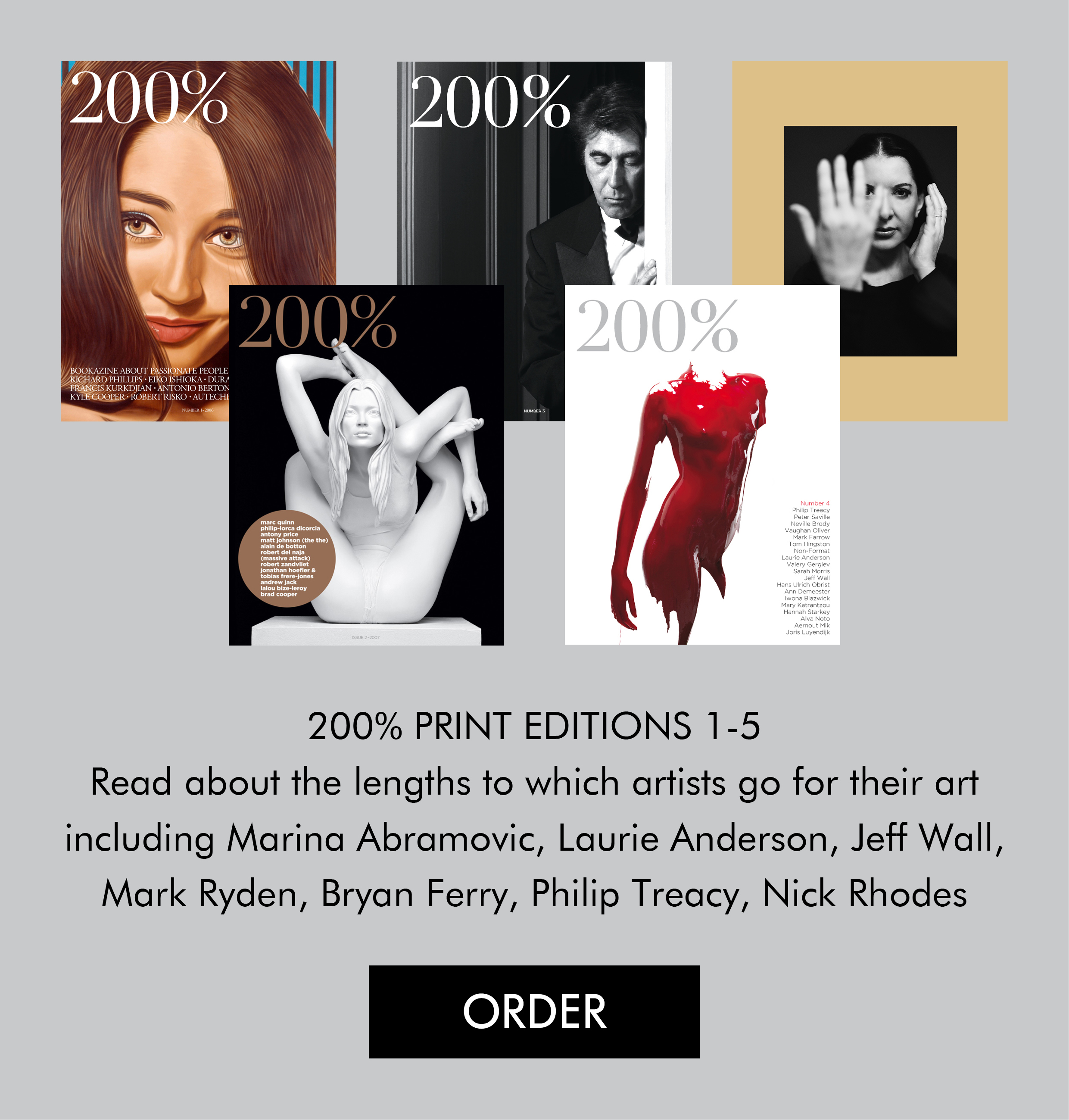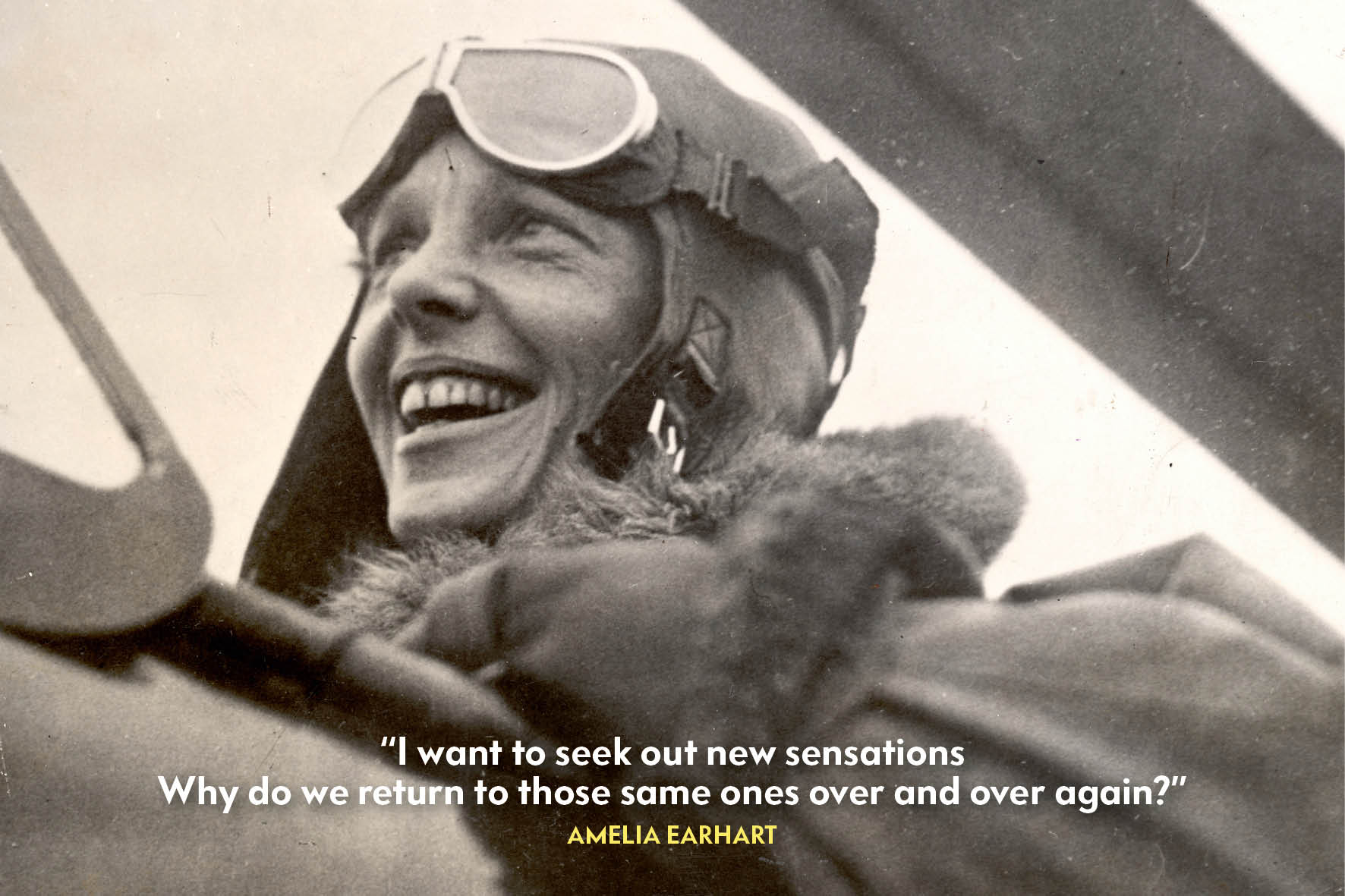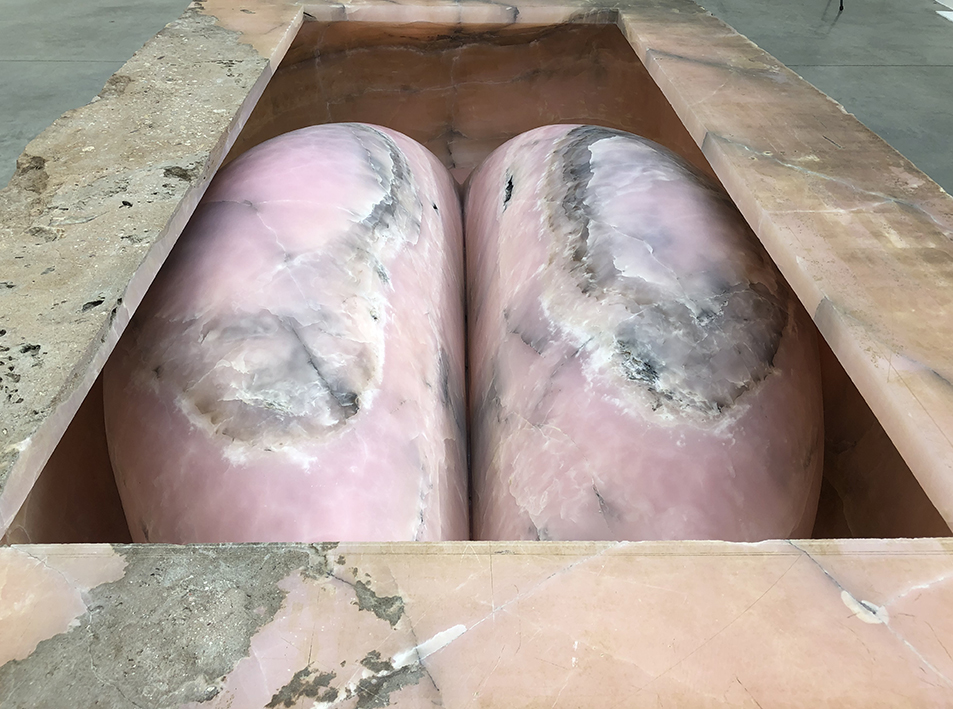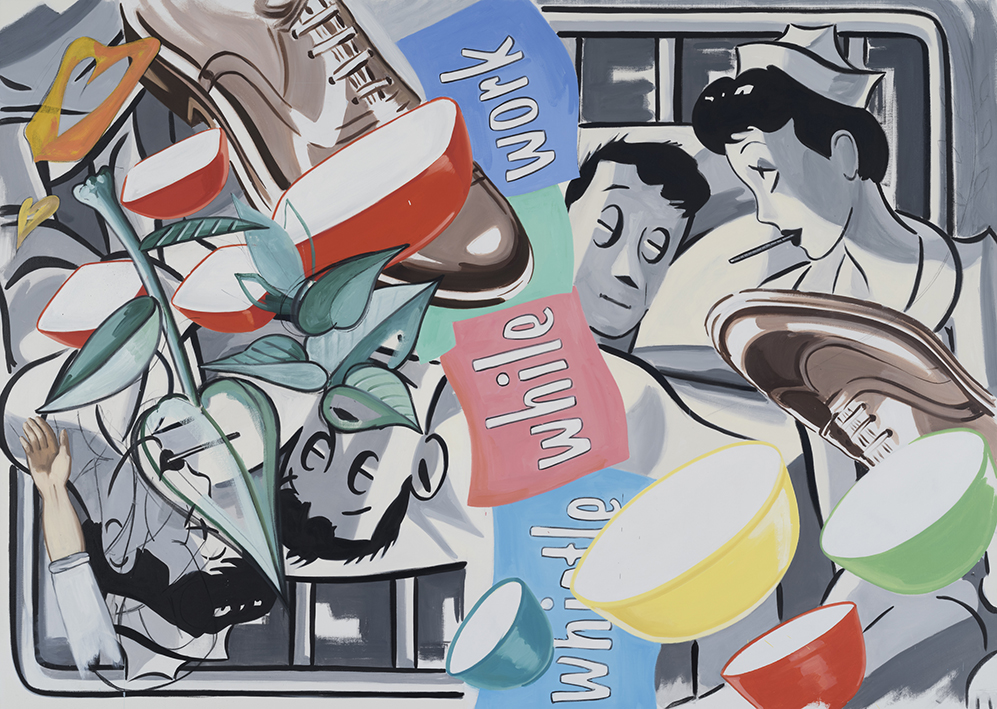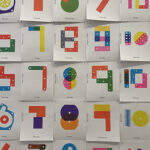 To gain a sense of what makes our interviewees ‘tick’ we like to observe and follow them during periods of their creative process, with access to behind-the-scenes to get an inside peak into their world. We were, therefore, thrilled that the renowned fashion journalist and critic, Sarah Mower, agreed to be followed for one day during London Fashion Week (LFW).
Written by Thierry Somers
As Sarah Mower is a contributing Editor for American Vogue, a car with a private driver, hired by Vogue, takes her to the shows organised at various venues in Town during LFW. For one day I could accompany Mower at the the backseat of the car, so I could observe, first hand, her work practices during one of the most hectic weeks in her life when she attends about 50 shows during that week.
The first show on Mower’s program was of the Greek designer Mary Katrantzou organised at a spectacular venue – the old Eurostar terminus at Waterloo Station. After a lively show, I stepped into the car and wanted to immediately ask Mower’s opinion on Katrantzou’s bold creation of lampshades as skirts. As she was in deep concentration, texting on her Blackberry, I decided not to disturb her and wait with my question until she was finished. Meanwhile, whilst we passed Buckingham Palace, I was looking at a black bag in between us that was overflowing with chic invitations for shows with Mower’s name gracefully written in calligraphy. By the time we arrived at Margaret Howell’s shop at Wigmore street, the next show on the program, Mower just finished texting. A whole group of fashionably dressed people were waiting to access the venue. Mower, though, entered immediately, informing the PR person at the door that I was with her, which gave me a sense of being like the rock journalist in the film Almost Famous: “I’m with the band”. Inside Mower seated herself at the end of the catwalk which was covered with plastic. As the show hadn’t started I asked her what she had been writing on her Blackberry. “I was writing my review of Mary’s show on my phone which will be posted on vogue.com within three hours after the show. I have to write them in the car otherwise I don’t have time to do it”.
When I spoke with Mower at a less hectic moment in her life, a few weeks before LFW at Somerset House, the headquarters of LFW, she explained that she was one of the first internet critics, starting with ‘style.com’ in 2002 where she remained until 2010. “It is style.com’s policy to post reviews the morning after the shows, so I was writing from 10pm until 3am. Once, that seemed fast. Now I am working for US Vogue.com, the speed has stepped up to posting during the day as most people are reporting from the show in real time on Twitter, or blogs, which means there is a pressure now for reviewers to turn out stuff at that pace”.
She admits that working at this ‘Vogue.com’ pace sometimes makes her sweat – especially when a show is not good – but Mower also sees advantages of the tight deadlines. “As it is so fresh in your memory you can visually remember the show quite well; you can write it from the heart as you let yourself be guided by your first impressions,” she says and adds “Besides that it is also good to get it out there, not to chew too much on it.”
Mower is restricted to 250 words for her reviews: when you read them, though, they ‘feel’ more than that number of words. In 250 words she is able to give the reader a summary of the designer’s collection; place the collection in context and define how it relates to the designer’s previous body of work; note for what type of woman the collection is meant to be; describes the development of the designer, and the creative challenges a designer is facing in the future. Her reviews are not meant to report on ‘what’s in or out’, or the latest catwalk trends, but to offer an ‘helicopter’ view. In a review on Michael Van der Ham’s show she provided the readers insight into the state of flux fashion currently faces:
“His manipulation of collage – a dress fitted on one side, and flowing away at the back, or cut short on one side, long on the other – is in one way, also a kind of commentary about the state of flux fashion finds itself in now, unsure what form to take, or whether to go forward, or keep looking back”. (US Vogue.com)
Mower’s writing style is engaging, imaginative without any presence of fashion jargon and her ‘tone’ of voice is direct, knowledgeable and funny. Her sentences are rich and, whilst quite long, still readable, as she uses parenthesis, to include detailed information, without detracting from the flow of the message. She is also not afraid to criticise the work of designers that she knows really well or offer some constructive criticism, as she did in her vogue.com review on Christopher Kane’s Fall 2011 Ready-to-Wear collection:
“It was – don’t get this wrong – a technically polished and intellectually original collection, putting Kane up there as one of the designers the world has to take into account. It’s just that he needs to push his talent to the point where his collection is broader and more inclusive, while also retaining his fierce focus. That’s a criticism he should take the right way: After all, it only means that women want more of him.” (US Vogue.com)
The Margaret Howell show is followed by the Mulberry salon show, held at the Claridge’s Hotel where again a swarm of fashionably dressed people have gathered before the entrance. After the show the driver returns us to the Eurostar Terminus for the debut at LFW of the Dutch designer Michael van de Ham. As we’re early for the show there is some time to sit down and chat about the life of a critic during LFW whilst we’re in the queue for a cup of soup served at the venue. “I hardly have time during fashion weeks to have a proper lunch – it’s all about eating in cars. My biggest luxuries during this week is getting a Coca Cola from a corner café or a newsagents and an even bigger luxury is able to go to the loo – it’s that glamorous”, she laughs. “You’re really running on empty when you go through this process of going to all these shows especially in Paris”, Mower continues to describe her daily life during a fashion week. “You can arrive somewhere absolutely dog-tired and you sometimes have to fight to get in, you’re abused by security guards, you’re freezing, you haven’t eaten, you’re cursing and then the show starts and you realise ‘Oh my God this one of the most exciting shows I’ve ever seen; I’m so happy I was here’. I’m looking for the goosebumps. That’s one of the things that keeps me going. But you can never tell when is going to happen”.
Mower stands up to greet a friend who happens to be wearing a T-shirt from the same collection that she also wears: a Richard Nicoll T-shirt with a Linder Sterling print. Watching Mower talking with her friend I notice from the previous time that we met there is an elegant, minimalistic and understated coolness in the way she dresses. Today she combines her Nicoll T-shirt with a sophisticated navy-blue Martin Margiela suit and rosebud stilettos. “I know what I can and can not wear”, she remarks when we talk about whether she dresses conscious of fashion. “I look at fashion according to what it can do for me every season. If it can’t do much, it doesn’t bother me! I’ve got a whole vocabulary of clothes and accessories to build new sentences from every season, anyway”.
Martin Margiela was one of Mower’s favourite designers. She is one of the few journalists who has met the Belgian designer. This is rare as all media contact with him is normally conducted via fax and his photograph has never been taken. Helmut Lang is another favourite, but both designers don’t work at their labels anymore. “I still have things of theirs which stand the tests of time and hard wear, but these days, I’m wearing bits and pieces from Céline, Richard Nicoll, Christopher Kane and Preen – far more British labels than ever before”.
As a child Mower had always been interested in fashion. Her parents used to read ‘The Daily Telegraph’ which had reports on the couture shows and line drawings. Her mother was an art teacher and encouraged her daughter to draw so she started doing fashion drawings. “My mother kept some of my drawings”, says Mower. “She gave me a book that has these really great line drawings of mine and then little swatches stuck on fabric from her sewing box what I imagined what the dresses would be made out. I think I must have been ten when I did that”.
Mower tells me that her aunt was very fashion conscious and she liked her drawings. For her thirteenth birthday she was given a subscription to Vogue from her aunt. “That was the best thing that ever happened to me,” laughs Mower. “I was, unofficially, studying fashion from a very early age”. Mower considers herself to be very lucky to be brought up in Bath, as it’s the location of the Museum of Costume. “As a girl, I would take a bus to the museum and stare at all the hats, corsets and gloves. They had all these vitrines with mannequins dressed in Elizabethan or Victorian costumes and painted backdrops of that period. I became absolutely fascinated with all that”.
With a subscription to Vogue and the Bath Museum of costume did she feel, as a young girl, attracted by the glamour of fashion? “Glamour?” Mower pauses. “You’d have to define glamour. It was just the sense of wonder at someone or something looking extraordinary – I don’t think I associated that with, say, the glamour of wealth and privilege though – didn’t make me want to ‘belong’ to that. I could just as easily get that feeling from looking at 18th century hats and gloves in the Bath Museum of costume or a Holbein portrait, which my mother made sure I saw from a very early age”.
Like most teenagers, Mower had outspoken ideas about what she liked to wear, which was inevitably led to ‘discussions’ with her mother. “I even had to fight my mother to have a pair of jeans, and I ended up having to customise clothes and buy things in jumble sales with my friends”, Mower recalls. “That was really fun-making patchwork halter neck out of my mother’s dressmaking scraps and long skirts out of fire-damaged velvet curtains. Badly; I was no good at sewing, didn’t have the patience. My mother, though, did had an artistic eye, and her mother and sister really cared what they wore – more in the fifties and sixties way, though”.
The chat had to end as the show was about to begin. Van der Ham’s models were wearing bold collage dresses with unusual but tasteful colourful combinations. After the show Mower quickly goes backstage to speak with the Dutchman to acquire some background information about the collection whilst he shows her his garments displayed on a rack. Mower eagerly touches the fabrics of the garments. The next show on the program is Antonio Berardi at The Great Hall in Westminster, which starts at 3.30pm. Mower is halfway through today’s schedule and there are shows of Vivienne Westwood, Matthew Williamson, Richard Nicoll and Kinder Aggugini on the program. She still makes an energetic impression.
The job of a reviewer is intense and demanding as they review each day, for six days long, around ten shows a day with each show consisting of between 30-40 garments shown within 15 minutes. That’s a lot of impressions to digest and a photographic memory is recommended. Submitting your reviews that have to be online three hours after the show, therefore, might be a blessing in disguise.
As the last show usually starts at 8pm it’s not an attractive idea to stay up until 3am in your hotel room to write all the reviews of the shows you have seen that day. A better option seems to write the reviews during the day and have a proper dinner at your hotel and go to bed at a decent hour to be fresh the next morning for another day of fashion shows.
Picture: Sarah Mower at the Mulberry salon show
London Fashion Week, from 16 September until 21 September.
To gain a sense of what makes our interviewees ‘tick’ we like to observe and follow them during periods of their creative process, with access to behind-the-scenes to get an inside peak into their world. We were, therefore, thrilled that the renowned fashion journalist and critic, Sarah Mower, agreed to be followed for one day during London Fashion Week (LFW).
Written by Thierry Somers
As Sarah Mower is a contributing Editor for American Vogue, a car with a private driver, hired by Vogue, takes her to the shows organised at various venues in Town during LFW. For one day I could accompany Mower at the the backseat of the car, so I could observe, first hand, her work practices during one of the most hectic weeks in her life when she attends about 50 shows during that week.
The first show on Mower’s program was of the Greek designer Mary Katrantzou organised at a spectacular venue – the old Eurostar terminus at Waterloo Station. After a lively show, I stepped into the car and wanted to immediately ask Mower’s opinion on Katrantzou’s bold creation of lampshades as skirts. As she was in deep concentration, texting on her Blackberry, I decided not to disturb her and wait with my question until she was finished. Meanwhile, whilst we passed Buckingham Palace, I was looking at a black bag in between us that was overflowing with chic invitations for shows with Mower’s name gracefully written in calligraphy. By the time we arrived at Margaret Howell’s shop at Wigmore street, the next show on the program, Mower just finished texting. A whole group of fashionably dressed people were waiting to access the venue. Mower, though, entered immediately, informing the PR person at the door that I was with her, which gave me a sense of being like the rock journalist in the film Almost Famous: “I’m with the band”. Inside Mower seated herself at the end of the catwalk which was covered with plastic. As the show hadn’t started I asked her what she had been writing on her Blackberry. “I was writing my review of Mary’s show on my phone which will be posted on vogue.com within three hours after the show. I have to write them in the car otherwise I don’t have time to do it”.
When I spoke with Mower at a less hectic moment in her life, a few weeks before LFW at Somerset House, the headquarters of LFW, she explained that she was one of the first internet critics, starting with ‘style.com’ in 2002 where she remained until 2010. “It is style.com’s policy to post reviews the morning after the shows, so I was writing from 10pm until 3am. Once, that seemed fast. Now I am working for US Vogue.com, the speed has stepped up to posting during the day as most people are reporting from the show in real time on Twitter, or blogs, which means there is a pressure now for reviewers to turn out stuff at that pace”.
She admits that working at this ‘Vogue.com’ pace sometimes makes her sweat – especially when a show is not good – but Mower also sees advantages of the tight deadlines. “As it is so fresh in your memory you can visually remember the show quite well; you can write it from the heart as you let yourself be guided by your first impressions,” she says and adds “Besides that it is also good to get it out there, not to chew too much on it.”
Mower is restricted to 250 words for her reviews: when you read them, though, they ‘feel’ more than that number of words. In 250 words she is able to give the reader a summary of the designer’s collection; place the collection in context and define how it relates to the designer’s previous body of work; note for what type of woman the collection is meant to be; describes the development of the designer, and the creative challenges a designer is facing in the future. Her reviews are not meant to report on ‘what’s in or out’, or the latest catwalk trends, but to offer an ‘helicopter’ view. In a review on Michael Van der Ham’s show she provided the readers insight into the state of flux fashion currently faces:
“His manipulation of collage – a dress fitted on one side, and flowing away at the back, or cut short on one side, long on the other – is in one way, also a kind of commentary about the state of flux fashion finds itself in now, unsure what form to take, or whether to go forward, or keep looking back”. (US Vogue.com)
Mower’s writing style is engaging, imaginative without any presence of fashion jargon and her ‘tone’ of voice is direct, knowledgeable and funny. Her sentences are rich and, whilst quite long, still readable, as she uses parenthesis, to include detailed information, without detracting from the flow of the message. She is also not afraid to criticise the work of designers that she knows really well or offer some constructive criticism, as she did in her vogue.com review on Christopher Kane’s Fall 2011 Ready-to-Wear collection:
“It was – don’t get this wrong – a technically polished and intellectually original collection, putting Kane up there as one of the designers the world has to take into account. It’s just that he needs to push his talent to the point where his collection is broader and more inclusive, while also retaining his fierce focus. That’s a criticism he should take the right way: After all, it only means that women want more of him.” (US Vogue.com)
The Margaret Howell show is followed by the Mulberry salon show, held at the Claridge’s Hotel where again a swarm of fashionably dressed people have gathered before the entrance. After the show the driver returns us to the Eurostar Terminus for the debut at LFW of the Dutch designer Michael van de Ham. As we’re early for the show there is some time to sit down and chat about the life of a critic during LFW whilst we’re in the queue for a cup of soup served at the venue. “I hardly have time during fashion weeks to have a proper lunch – it’s all about eating in cars. My biggest luxuries during this week is getting a Coca Cola from a corner café or a newsagents and an even bigger luxury is able to go to the loo – it’s that glamorous”, she laughs. “You’re really running on empty when you go through this process of going to all these shows especially in Paris”, Mower continues to describe her daily life during a fashion week. “You can arrive somewhere absolutely dog-tired and you sometimes have to fight to get in, you’re abused by security guards, you’re freezing, you haven’t eaten, you’re cursing and then the show starts and you realise ‘Oh my God this one of the most exciting shows I’ve ever seen; I’m so happy I was here’. I’m looking for the goosebumps. That’s one of the things that keeps me going. But you can never tell when is going to happen”.
Mower stands up to greet a friend who happens to be wearing a T-shirt from the same collection that she also wears: a Richard Nicoll T-shirt with a Linder Sterling print. Watching Mower talking with her friend I notice from the previous time that we met there is an elegant, minimalistic and understated coolness in the way she dresses. Today she combines her Nicoll T-shirt with a sophisticated navy-blue Martin Margiela suit and rosebud stilettos. “I know what I can and can not wear”, she remarks when we talk about whether she dresses conscious of fashion. “I look at fashion according to what it can do for me every season. If it can’t do much, it doesn’t bother me! I’ve got a whole vocabulary of clothes and accessories to build new sentences from every season, anyway”.
Martin Margiela was one of Mower’s favourite designers. She is one of the few journalists who has met the Belgian designer. This is rare as all media contact with him is normally conducted via fax and his photograph has never been taken. Helmut Lang is another favourite, but both designers don’t work at their labels anymore. “I still have things of theirs which stand the tests of time and hard wear, but these days, I’m wearing bits and pieces from Céline, Richard Nicoll, Christopher Kane and Preen – far more British labels than ever before”.
As a child Mower had always been interested in fashion. Her parents used to read ‘The Daily Telegraph’ which had reports on the couture shows and line drawings. Her mother was an art teacher and encouraged her daughter to draw so she started doing fashion drawings. “My mother kept some of my drawings”, says Mower. “She gave me a book that has these really great line drawings of mine and then little swatches stuck on fabric from her sewing box what I imagined what the dresses would be made out. I think I must have been ten when I did that”.
Mower tells me that her aunt was very fashion conscious and she liked her drawings. For her thirteenth birthday she was given a subscription to Vogue from her aunt. “That was the best thing that ever happened to me,” laughs Mower. “I was, unofficially, studying fashion from a very early age”. Mower considers herself to be very lucky to be brought up in Bath, as it’s the location of the Museum of Costume. “As a girl, I would take a bus to the museum and stare at all the hats, corsets and gloves. They had all these vitrines with mannequins dressed in Elizabethan or Victorian costumes and painted backdrops of that period. I became absolutely fascinated with all that”.
With a subscription to Vogue and the Bath Museum of costume did she feel, as a young girl, attracted by the glamour of fashion? “Glamour?” Mower pauses. “You’d have to define glamour. It was just the sense of wonder at someone or something looking extraordinary – I don’t think I associated that with, say, the glamour of wealth and privilege though – didn’t make me want to ‘belong’ to that. I could just as easily get that feeling from looking at 18th century hats and gloves in the Bath Museum of costume or a Holbein portrait, which my mother made sure I saw from a very early age”.
Like most teenagers, Mower had outspoken ideas about what she liked to wear, which was inevitably led to ‘discussions’ with her mother. “I even had to fight my mother to have a pair of jeans, and I ended up having to customise clothes and buy things in jumble sales with my friends”, Mower recalls. “That was really fun-making patchwork halter neck out of my mother’s dressmaking scraps and long skirts out of fire-damaged velvet curtains. Badly; I was no good at sewing, didn’t have the patience. My mother, though, did had an artistic eye, and her mother and sister really cared what they wore – more in the fifties and sixties way, though”.
The chat had to end as the show was about to begin. Van der Ham’s models were wearing bold collage dresses with unusual but tasteful colourful combinations. After the show Mower quickly goes backstage to speak with the Dutchman to acquire some background information about the collection whilst he shows her his garments displayed on a rack. Mower eagerly touches the fabrics of the garments. The next show on the program is Antonio Berardi at The Great Hall in Westminster, which starts at 3.30pm. Mower is halfway through today’s schedule and there are shows of Vivienne Westwood, Matthew Williamson, Richard Nicoll and Kinder Aggugini on the program. She still makes an energetic impression.
The job of a reviewer is intense and demanding as they review each day, for six days long, around ten shows a day with each show consisting of between 30-40 garments shown within 15 minutes. That’s a lot of impressions to digest and a photographic memory is recommended. Submitting your reviews that have to be online three hours after the show, therefore, might be a blessing in disguise.
As the last show usually starts at 8pm it’s not an attractive idea to stay up until 3am in your hotel room to write all the reviews of the shows you have seen that day. A better option seems to write the reviews during the day and have a proper dinner at your hotel and go to bed at a decent hour to be fresh the next morning for another day of fashion shows.
Picture: Sarah Mower at the Mulberry salon show
London Fashion Week, from 16 September until 21 September.
Fashion
 To gain a sense of what makes our interviewees ‘tick’ we like to observe and follow them during periods of their creative process, with access to behind-the-scenes to get an inside peak into their world. We were, therefore, thrilled that the renowned fashion journalist and critic, Sarah Mower, agreed to be followed for one day during London Fashion Week (LFW).
Written by Thierry Somers
As Sarah Mower is a contributing Editor for American Vogue, a car with a private driver, hired by Vogue, takes her to the shows organised at various venues in Town during LFW. For one day I could accompany Mower at the the backseat of the car, so I could observe, first hand, her work practices during one of the most hectic weeks in her life when she attends about 50 shows during that week.
The first show on Mower’s program was of the Greek designer Mary Katrantzou organised at a spectacular venue – the old Eurostar terminus at Waterloo Station. After a lively show, I stepped into the car and wanted to immediately ask Mower’s opinion on Katrantzou’s bold creation of lampshades as skirts. As she was in deep concentration, texting on her Blackberry, I decided not to disturb her and wait with my question until she was finished. Meanwhile, whilst we passed Buckingham Palace, I was looking at a black bag in between us that was overflowing with chic invitations for shows with Mower’s name gracefully written in calligraphy. By the time we arrived at Margaret Howell’s shop at Wigmore street, the next show on the program, Mower just finished texting. A whole group of fashionably dressed people were waiting to access the venue. Mower, though, entered immediately, informing the PR person at the door that I was with her, which gave me a sense of being like the rock journalist in the film Almost Famous: “I’m with the band”. Inside Mower seated herself at the end of the catwalk which was covered with plastic. As the show hadn’t started I asked her what she had been writing on her Blackberry. “I was writing my review of Mary’s show on my phone which will be posted on vogue.com within three hours after the show. I have to write them in the car otherwise I don’t have time to do it”.
When I spoke with Mower at a less hectic moment in her life, a few weeks before LFW at Somerset House, the headquarters of LFW, she explained that she was one of the first internet critics, starting with ‘style.com’ in 2002 where she remained until 2010. “It is style.com’s policy to post reviews the morning after the shows, so I was writing from 10pm until 3am. Once, that seemed fast. Now I am working for US Vogue.com, the speed has stepped up to posting during the day as most people are reporting from the show in real time on Twitter, or blogs, which means there is a pressure now for reviewers to turn out stuff at that pace”.
She admits that working at this ‘Vogue.com’ pace sometimes makes her sweat – especially when a show is not good – but Mower also sees advantages of the tight deadlines. “As it is so fresh in your memory you can visually remember the show quite well; you can write it from the heart as you let yourself be guided by your first impressions,” she says and adds “Besides that it is also good to get it out there, not to chew too much on it.”
Mower is restricted to 250 words for her reviews: when you read them, though, they ‘feel’ more than that number of words. In 250 words she is able to give the reader a summary of the designer’s collection; place the collection in context and define how it relates to the designer’s previous body of work; note for what type of woman the collection is meant to be; describes the development of the designer, and the creative challenges a designer is facing in the future. Her reviews are not meant to report on ‘what’s in or out’, or the latest catwalk trends, but to offer an ‘helicopter’ view. In a review on Michael Van der Ham’s show she provided the readers insight into the state of flux fashion currently faces:
“His manipulation of collage – a dress fitted on one side, and flowing away at the back, or cut short on one side, long on the other – is in one way, also a kind of commentary about the state of flux fashion finds itself in now, unsure what form to take, or whether to go forward, or keep looking back”. (US Vogue.com)
Mower’s writing style is engaging, imaginative without any presence of fashion jargon and her ‘tone’ of voice is direct, knowledgeable and funny. Her sentences are rich and, whilst quite long, still readable, as she uses parenthesis, to include detailed information, without detracting from the flow of the message. She is also not afraid to criticise the work of designers that she knows really well or offer some constructive criticism, as she did in her vogue.com review on Christopher Kane’s Fall 2011 Ready-to-Wear collection:
“It was – don’t get this wrong – a technically polished and intellectually original collection, putting Kane up there as one of the designers the world has to take into account. It’s just that he needs to push his talent to the point where his collection is broader and more inclusive, while also retaining his fierce focus. That’s a criticism he should take the right way: After all, it only means that women want more of him.” (US Vogue.com)
The Margaret Howell show is followed by the Mulberry salon show, held at the Claridge’s Hotel where again a swarm of fashionably dressed people have gathered before the entrance. After the show the driver returns us to the Eurostar Terminus for the debut at LFW of the Dutch designer Michael van de Ham. As we’re early for the show there is some time to sit down and chat about the life of a critic during LFW whilst we’re in the queue for a cup of soup served at the venue. “I hardly have time during fashion weeks to have a proper lunch – it’s all about eating in cars. My biggest luxuries during this week is getting a Coca Cola from a corner café or a newsagents and an even bigger luxury is able to go to the loo – it’s that glamorous”, she laughs. “You’re really running on empty when you go through this process of going to all these shows especially in Paris”, Mower continues to describe her daily life during a fashion week. “You can arrive somewhere absolutely dog-tired and you sometimes have to fight to get in, you’re abused by security guards, you’re freezing, you haven’t eaten, you’re cursing and then the show starts and you realise ‘Oh my God this one of the most exciting shows I’ve ever seen; I’m so happy I was here’. I’m looking for the goosebumps. That’s one of the things that keeps me going. But you can never tell when is going to happen”.
Mower stands up to greet a friend who happens to be wearing a T-shirt from the same collection that she also wears: a Richard Nicoll T-shirt with a Linder Sterling print. Watching Mower talking with her friend I notice from the previous time that we met there is an elegant, minimalistic and understated coolness in the way she dresses. Today she combines her Nicoll T-shirt with a sophisticated navy-blue Martin Margiela suit and rosebud stilettos. “I know what I can and can not wear”, she remarks when we talk about whether she dresses conscious of fashion. “I look at fashion according to what it can do for me every season. If it can’t do much, it doesn’t bother me! I’ve got a whole vocabulary of clothes and accessories to build new sentences from every season, anyway”.
Martin Margiela was one of Mower’s favourite designers. She is one of the few journalists who has met the Belgian designer. This is rare as all media contact with him is normally conducted via fax and his photograph has never been taken. Helmut Lang is another favourite, but both designers don’t work at their labels anymore. “I still have things of theirs which stand the tests of time and hard wear, but these days, I’m wearing bits and pieces from Céline, Richard Nicoll, Christopher Kane and Preen – far more British labels than ever before”.
As a child Mower had always been interested in fashion. Her parents used to read ‘The Daily Telegraph’ which had reports on the couture shows and line drawings. Her mother was an art teacher and encouraged her daughter to draw so she started doing fashion drawings. “My mother kept some of my drawings”, says Mower. “She gave me a book that has these really great line drawings of mine and then little swatches stuck on fabric from her sewing box what I imagined what the dresses would be made out. I think I must have been ten when I did that”.
Mower tells me that her aunt was very fashion conscious and she liked her drawings. For her thirteenth birthday she was given a subscription to Vogue from her aunt. “That was the best thing that ever happened to me,” laughs Mower. “I was, unofficially, studying fashion from a very early age”. Mower considers herself to be very lucky to be brought up in Bath, as it’s the location of the Museum of Costume. “As a girl, I would take a bus to the museum and stare at all the hats, corsets and gloves. They had all these vitrines with mannequins dressed in Elizabethan or Victorian costumes and painted backdrops of that period. I became absolutely fascinated with all that”.
With a subscription to Vogue and the Bath Museum of costume did she feel, as a young girl, attracted by the glamour of fashion? “Glamour?” Mower pauses. “You’d have to define glamour. It was just the sense of wonder at someone or something looking extraordinary – I don’t think I associated that with, say, the glamour of wealth and privilege though – didn’t make me want to ‘belong’ to that. I could just as easily get that feeling from looking at 18th century hats and gloves in the Bath Museum of costume or a Holbein portrait, which my mother made sure I saw from a very early age”.
Like most teenagers, Mower had outspoken ideas about what she liked to wear, which was inevitably led to ‘discussions’ with her mother. “I even had to fight my mother to have a pair of jeans, and I ended up having to customise clothes and buy things in jumble sales with my friends”, Mower recalls. “That was really fun-making patchwork halter neck out of my mother’s dressmaking scraps and long skirts out of fire-damaged velvet curtains. Badly; I was no good at sewing, didn’t have the patience. My mother, though, did had an artistic eye, and her mother and sister really cared what they wore – more in the fifties and sixties way, though”.
The chat had to end as the show was about to begin. Van der Ham’s models were wearing bold collage dresses with unusual but tasteful colourful combinations. After the show Mower quickly goes backstage to speak with the Dutchman to acquire some background information about the collection whilst he shows her his garments displayed on a rack. Mower eagerly touches the fabrics of the garments. The next show on the program is Antonio Berardi at The Great Hall in Westminster, which starts at 3.30pm. Mower is halfway through today’s schedule and there are shows of Vivienne Westwood, Matthew Williamson, Richard Nicoll and Kinder Aggugini on the program. She still makes an energetic impression.
The job of a reviewer is intense and demanding as they review each day, for six days long, around ten shows a day with each show consisting of between 30-40 garments shown within 15 minutes. That’s a lot of impressions to digest and a photographic memory is recommended. Submitting your reviews that have to be online three hours after the show, therefore, might be a blessing in disguise.
As the last show usually starts at 8pm it’s not an attractive idea to stay up until 3am in your hotel room to write all the reviews of the shows you have seen that day. A better option seems to write the reviews during the day and have a proper dinner at your hotel and go to bed at a decent hour to be fresh the next morning for another day of fashion shows.
Picture: Sarah Mower at the Mulberry salon show
London Fashion Week, from 16 September until 21 September.
To gain a sense of what makes our interviewees ‘tick’ we like to observe and follow them during periods of their creative process, with access to behind-the-scenes to get an inside peak into their world. We were, therefore, thrilled that the renowned fashion journalist and critic, Sarah Mower, agreed to be followed for one day during London Fashion Week (LFW).
Written by Thierry Somers
As Sarah Mower is a contributing Editor for American Vogue, a car with a private driver, hired by Vogue, takes her to the shows organised at various venues in Town during LFW. For one day I could accompany Mower at the the backseat of the car, so I could observe, first hand, her work practices during one of the most hectic weeks in her life when she attends about 50 shows during that week.
The first show on Mower’s program was of the Greek designer Mary Katrantzou organised at a spectacular venue – the old Eurostar terminus at Waterloo Station. After a lively show, I stepped into the car and wanted to immediately ask Mower’s opinion on Katrantzou’s bold creation of lampshades as skirts. As she was in deep concentration, texting on her Blackberry, I decided not to disturb her and wait with my question until she was finished. Meanwhile, whilst we passed Buckingham Palace, I was looking at a black bag in between us that was overflowing with chic invitations for shows with Mower’s name gracefully written in calligraphy. By the time we arrived at Margaret Howell’s shop at Wigmore street, the next show on the program, Mower just finished texting. A whole group of fashionably dressed people were waiting to access the venue. Mower, though, entered immediately, informing the PR person at the door that I was with her, which gave me a sense of being like the rock journalist in the film Almost Famous: “I’m with the band”. Inside Mower seated herself at the end of the catwalk which was covered with plastic. As the show hadn’t started I asked her what she had been writing on her Blackberry. “I was writing my review of Mary’s show on my phone which will be posted on vogue.com within three hours after the show. I have to write them in the car otherwise I don’t have time to do it”.
When I spoke with Mower at a less hectic moment in her life, a few weeks before LFW at Somerset House, the headquarters of LFW, she explained that she was one of the first internet critics, starting with ‘style.com’ in 2002 where she remained until 2010. “It is style.com’s policy to post reviews the morning after the shows, so I was writing from 10pm until 3am. Once, that seemed fast. Now I am working for US Vogue.com, the speed has stepped up to posting during the day as most people are reporting from the show in real time on Twitter, or blogs, which means there is a pressure now for reviewers to turn out stuff at that pace”.
She admits that working at this ‘Vogue.com’ pace sometimes makes her sweat – especially when a show is not good – but Mower also sees advantages of the tight deadlines. “As it is so fresh in your memory you can visually remember the show quite well; you can write it from the heart as you let yourself be guided by your first impressions,” she says and adds “Besides that it is also good to get it out there, not to chew too much on it.”
Mower is restricted to 250 words for her reviews: when you read them, though, they ‘feel’ more than that number of words. In 250 words she is able to give the reader a summary of the designer’s collection; place the collection in context and define how it relates to the designer’s previous body of work; note for what type of woman the collection is meant to be; describes the development of the designer, and the creative challenges a designer is facing in the future. Her reviews are not meant to report on ‘what’s in or out’, or the latest catwalk trends, but to offer an ‘helicopter’ view. In a review on Michael Van der Ham’s show she provided the readers insight into the state of flux fashion currently faces:
“His manipulation of collage – a dress fitted on one side, and flowing away at the back, or cut short on one side, long on the other – is in one way, also a kind of commentary about the state of flux fashion finds itself in now, unsure what form to take, or whether to go forward, or keep looking back”. (US Vogue.com)
Mower’s writing style is engaging, imaginative without any presence of fashion jargon and her ‘tone’ of voice is direct, knowledgeable and funny. Her sentences are rich and, whilst quite long, still readable, as she uses parenthesis, to include detailed information, without detracting from the flow of the message. She is also not afraid to criticise the work of designers that she knows really well or offer some constructive criticism, as she did in her vogue.com review on Christopher Kane’s Fall 2011 Ready-to-Wear collection:
“It was – don’t get this wrong – a technically polished and intellectually original collection, putting Kane up there as one of the designers the world has to take into account. It’s just that he needs to push his talent to the point where his collection is broader and more inclusive, while also retaining his fierce focus. That’s a criticism he should take the right way: After all, it only means that women want more of him.” (US Vogue.com)
The Margaret Howell show is followed by the Mulberry salon show, held at the Claridge’s Hotel where again a swarm of fashionably dressed people have gathered before the entrance. After the show the driver returns us to the Eurostar Terminus for the debut at LFW of the Dutch designer Michael van de Ham. As we’re early for the show there is some time to sit down and chat about the life of a critic during LFW whilst we’re in the queue for a cup of soup served at the venue. “I hardly have time during fashion weeks to have a proper lunch – it’s all about eating in cars. My biggest luxuries during this week is getting a Coca Cola from a corner café or a newsagents and an even bigger luxury is able to go to the loo – it’s that glamorous”, she laughs. “You’re really running on empty when you go through this process of going to all these shows especially in Paris”, Mower continues to describe her daily life during a fashion week. “You can arrive somewhere absolutely dog-tired and you sometimes have to fight to get in, you’re abused by security guards, you’re freezing, you haven’t eaten, you’re cursing and then the show starts and you realise ‘Oh my God this one of the most exciting shows I’ve ever seen; I’m so happy I was here’. I’m looking for the goosebumps. That’s one of the things that keeps me going. But you can never tell when is going to happen”.
Mower stands up to greet a friend who happens to be wearing a T-shirt from the same collection that she also wears: a Richard Nicoll T-shirt with a Linder Sterling print. Watching Mower talking with her friend I notice from the previous time that we met there is an elegant, minimalistic and understated coolness in the way she dresses. Today she combines her Nicoll T-shirt with a sophisticated navy-blue Martin Margiela suit and rosebud stilettos. “I know what I can and can not wear”, she remarks when we talk about whether she dresses conscious of fashion. “I look at fashion according to what it can do for me every season. If it can’t do much, it doesn’t bother me! I’ve got a whole vocabulary of clothes and accessories to build new sentences from every season, anyway”.
Martin Margiela was one of Mower’s favourite designers. She is one of the few journalists who has met the Belgian designer. This is rare as all media contact with him is normally conducted via fax and his photograph has never been taken. Helmut Lang is another favourite, but both designers don’t work at their labels anymore. “I still have things of theirs which stand the tests of time and hard wear, but these days, I’m wearing bits and pieces from Céline, Richard Nicoll, Christopher Kane and Preen – far more British labels than ever before”.
As a child Mower had always been interested in fashion. Her parents used to read ‘The Daily Telegraph’ which had reports on the couture shows and line drawings. Her mother was an art teacher and encouraged her daughter to draw so she started doing fashion drawings. “My mother kept some of my drawings”, says Mower. “She gave me a book that has these really great line drawings of mine and then little swatches stuck on fabric from her sewing box what I imagined what the dresses would be made out. I think I must have been ten when I did that”.
Mower tells me that her aunt was very fashion conscious and she liked her drawings. For her thirteenth birthday she was given a subscription to Vogue from her aunt. “That was the best thing that ever happened to me,” laughs Mower. “I was, unofficially, studying fashion from a very early age”. Mower considers herself to be very lucky to be brought up in Bath, as it’s the location of the Museum of Costume. “As a girl, I would take a bus to the museum and stare at all the hats, corsets and gloves. They had all these vitrines with mannequins dressed in Elizabethan or Victorian costumes and painted backdrops of that period. I became absolutely fascinated with all that”.
With a subscription to Vogue and the Bath Museum of costume did she feel, as a young girl, attracted by the glamour of fashion? “Glamour?” Mower pauses. “You’d have to define glamour. It was just the sense of wonder at someone or something looking extraordinary – I don’t think I associated that with, say, the glamour of wealth and privilege though – didn’t make me want to ‘belong’ to that. I could just as easily get that feeling from looking at 18th century hats and gloves in the Bath Museum of costume or a Holbein portrait, which my mother made sure I saw from a very early age”.
Like most teenagers, Mower had outspoken ideas about what she liked to wear, which was inevitably led to ‘discussions’ with her mother. “I even had to fight my mother to have a pair of jeans, and I ended up having to customise clothes and buy things in jumble sales with my friends”, Mower recalls. “That was really fun-making patchwork halter neck out of my mother’s dressmaking scraps and long skirts out of fire-damaged velvet curtains. Badly; I was no good at sewing, didn’t have the patience. My mother, though, did had an artistic eye, and her mother and sister really cared what they wore – more in the fifties and sixties way, though”.
The chat had to end as the show was about to begin. Van der Ham’s models were wearing bold collage dresses with unusual but tasteful colourful combinations. After the show Mower quickly goes backstage to speak with the Dutchman to acquire some background information about the collection whilst he shows her his garments displayed on a rack. Mower eagerly touches the fabrics of the garments. The next show on the program is Antonio Berardi at The Great Hall in Westminster, which starts at 3.30pm. Mower is halfway through today’s schedule and there are shows of Vivienne Westwood, Matthew Williamson, Richard Nicoll and Kinder Aggugini on the program. She still makes an energetic impression.
The job of a reviewer is intense and demanding as they review each day, for six days long, around ten shows a day with each show consisting of between 30-40 garments shown within 15 minutes. That’s a lot of impressions to digest and a photographic memory is recommended. Submitting your reviews that have to be online three hours after the show, therefore, might be a blessing in disguise.
As the last show usually starts at 8pm it’s not an attractive idea to stay up until 3am in your hotel room to write all the reviews of the shows you have seen that day. A better option seems to write the reviews during the day and have a proper dinner at your hotel and go to bed at a decent hour to be fresh the next morning for another day of fashion shows.
Picture: Sarah Mower at the Mulberry salon show
London Fashion Week, from 16 September until 21 September.

